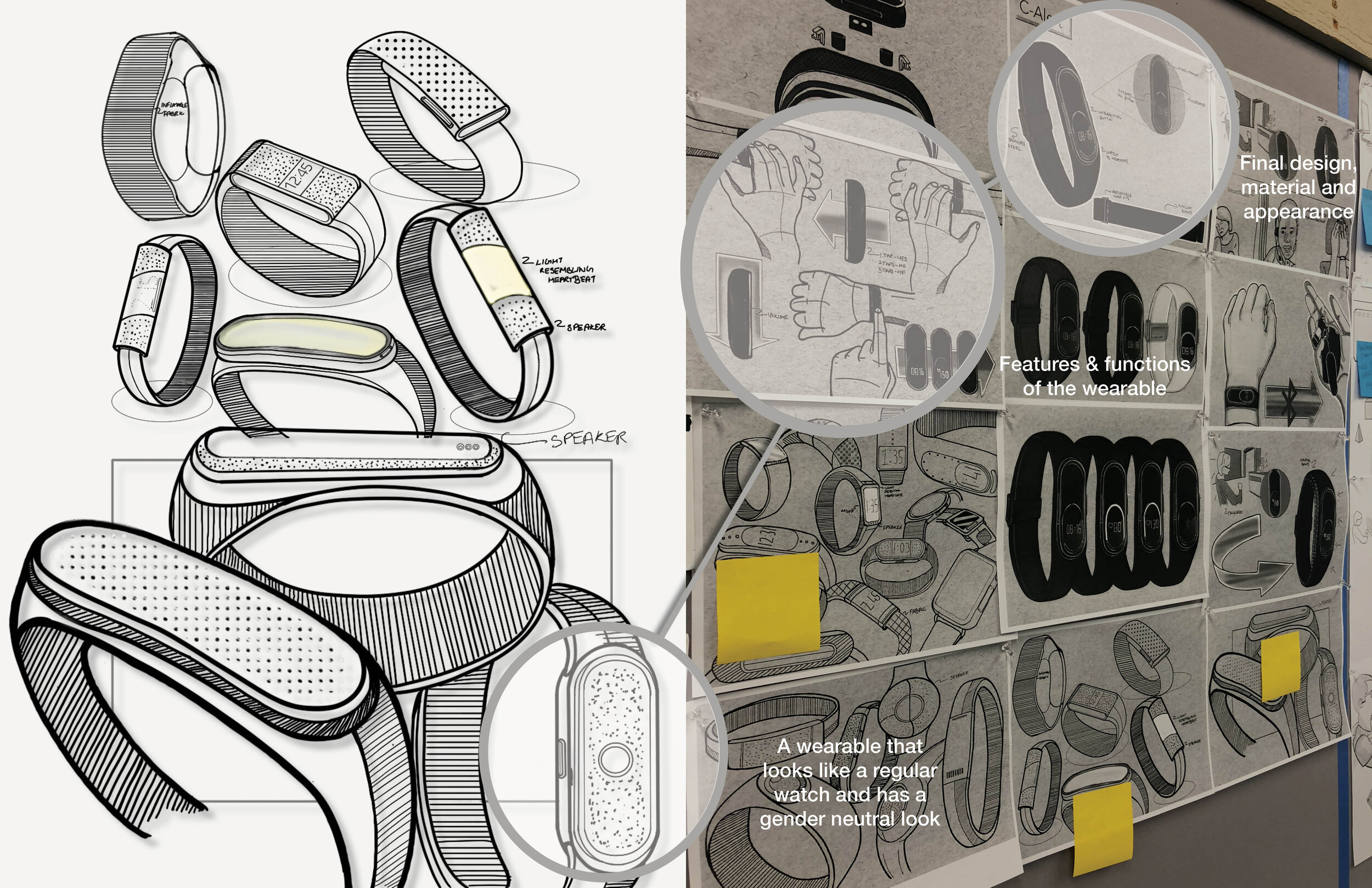Found: A PTSD trigger management system | Senior Thesis project | 2017-2018
Designing a wearable system that enables Post-Traumatic Stress Disorder survivors to monitor and address trigger symptoms
Generative Research | Recruitment | Experience Maps | Interviews | Survey | Secondary Research | User Validation | Product Design | UI Design
*TW: This is a summarized video of my project. If you’re prone to triggers, please proceed directly to my case study!
Jump To
After observing a lot of people around me suffering from PTSD, and receiving little to no help I decided to explore a way to provide support to the survivors. Like everyone else, I started out with a lot of assumptions which were ultimately proven wrong when I tried to define the problem. The numbers were compelling ––
Early research also disqualified the common misconception that PTSD only affects people in the military. It is very common amongst anyone who has been through a traumatic experience, and the effects have lasted over a prolonged period of time. Anyone can get PTSD at any age due to causes such as sexual abuse, car accidents, domestic violence, experiencing a natural disaster etc.
Research Approach
The experience maps and the survey helped me define the problem, and the in-depth interviews and expert interviews helped me move closer to developing design recommendations ––

Experience Maps
To understand a day in the life, and identify common patterns and intervention opportunities.
(8)
Survey
A short survey was done to confirm initial findings and to identify recurring symptoms.
(100)
In-depth Interviews
Conduct further interviews based on experience map findings, & gain insight on needs.
(5)
Expert Interviews
Gain insights on the methodology used to determine treatments specific to trauma patients.
(2)
Recruiting Participants
Experience Maps
I found participants through word of mouth for experience maps to make sure that they were willing and comfortable talking to me about this very personal experience and did not feel like they are participating in a scientific study. This approach helped establish initial trust and made the conversation more natural. It is also reiterated my finding as to how common PTSD really is despite the stigma around it.
Survey & In-Depth Interviews
Recruiting participants for these studies was a bit tricky. I decided to post my survey on various online forums, and Facebook groups to gain more responses. However, due to the sensitivity of the topic people were resistant to even posting the survey on their pages. I even reached out to the Ohio State University to see if they would be willing to pass out my survey. However, that was also a no go. Finally, I succeeded in achieving over 100 responses and even had participants submit their email-ids for further in-depth interviews.
Study Considerations
Stress balls, chocolates, bottled water, and choice of music were available for each participant. Explicit consent was given before recording the sessions, and participants were allowed to leave at any point. Extra consideration was given to the space used for research to ensure privacy.
Research Insights
Triggers were a common occurrence amongst participants despite the varying natures of their traumatic experience, and their stage in the recovery process. They can cause flashbacks, transporting the person back to the original event causing panic attacks and detachment from reality. They can be caused by anything resembling the traumatic experience from smell to touch. Experts helped through teaching various grounding techniques that help the client stay in touch with reality. However, the mode of treatment selected depended on the counselor, and their area of expertise. They also mentioned that though they have utilized product/digital solutions in the past, they don’t want clients to replace it for therapy as it could lead to dire consequences
Pain Points –
Awareness
Disconnect between mind and body leads to delayed self-intervention, rendering the current management system obsolete. The flashbacks, and dissociation from reality can lead to not recognizing the exact source of the triggers.
Support System
Lack of support system due to isolation and the stigma around PTSD. This can lead to repeating patterns with little to no support or progress.
“I can go through the day like nothing is wrong & then suddenly I am back to where it all happened.”
— Trigger episode as described by one of the participants
Opportunity
Create an assertive tool that increases awareness of the trigger episode, helps mange it in a timely manner, and connects to an extended support system.
Recommendations
A wearable system that creates a natural way of receiving information and providing support in a timely manner during a trigger episode by directly engaging the senses.
Design & Development
After talking to my users about some of the concepts, they mentioned that even the thought of having a device that captures their triggers or being able to see them in an app is triggering to them. This helped me narrow down my concepts even further.
Solution
The app collects data related to heart rate so that the user can work with their counselor to identify patterns, and specific triggers. It also allows them to set their preferred coping method, and connects them to their preferred support system.












